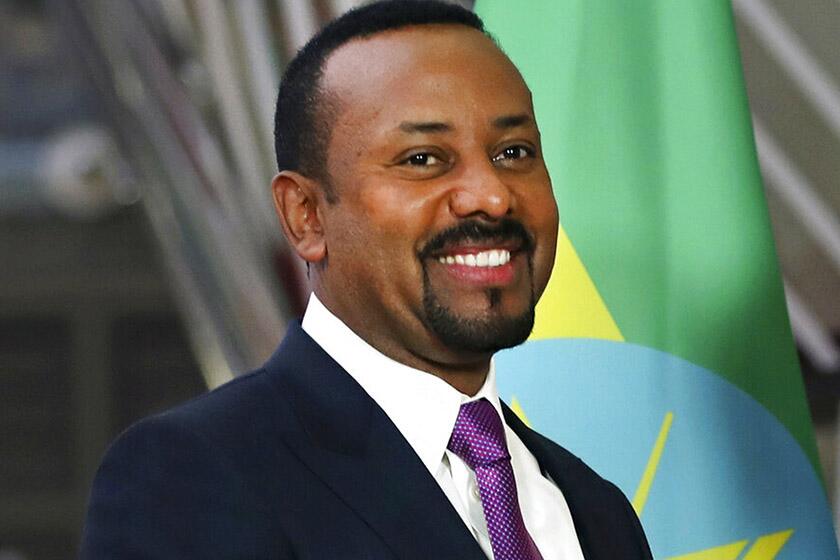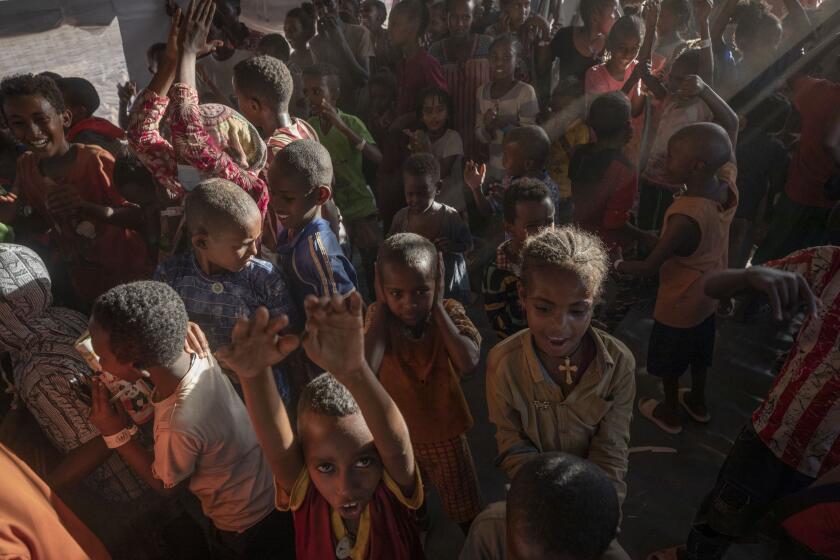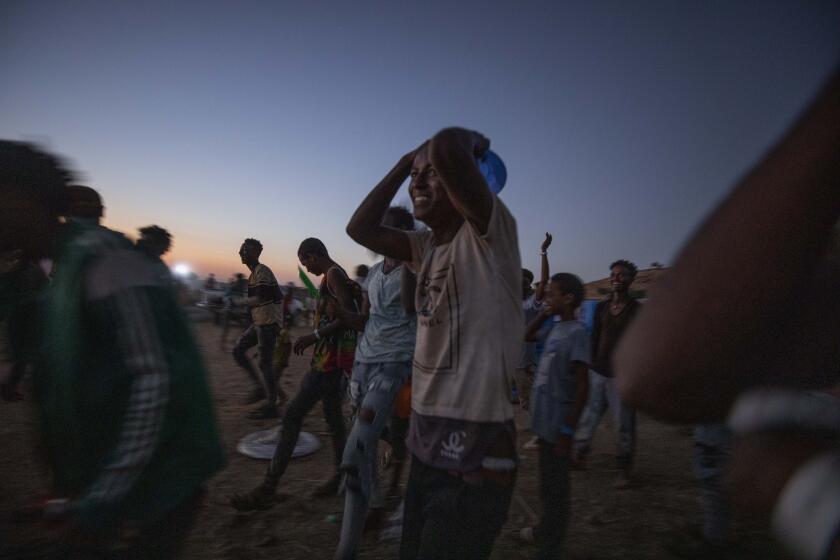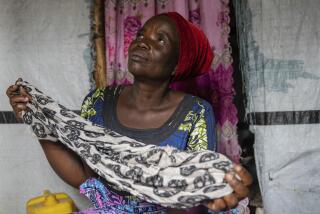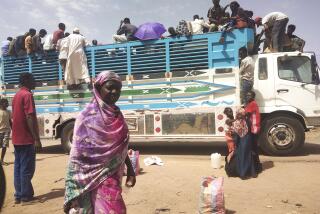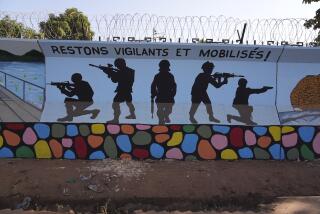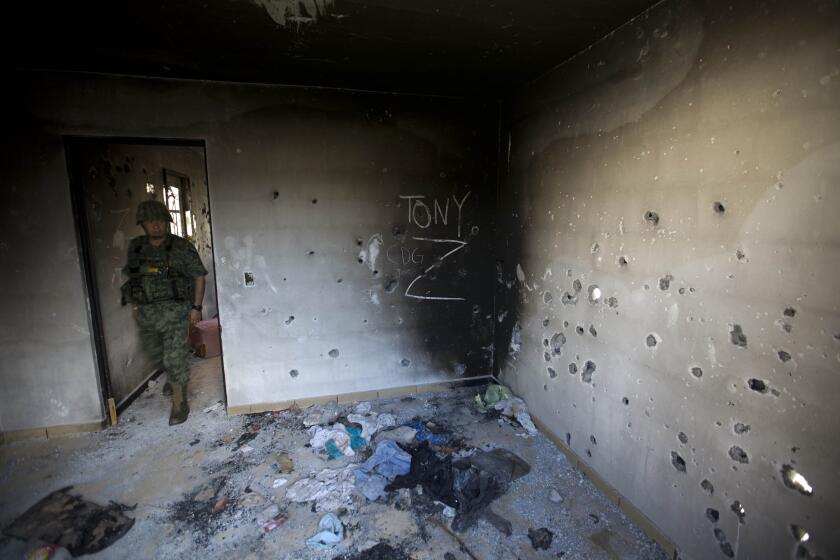‘I would never go back’: Accounts of atrocities grow in Ethiopia’s Tigray conflict
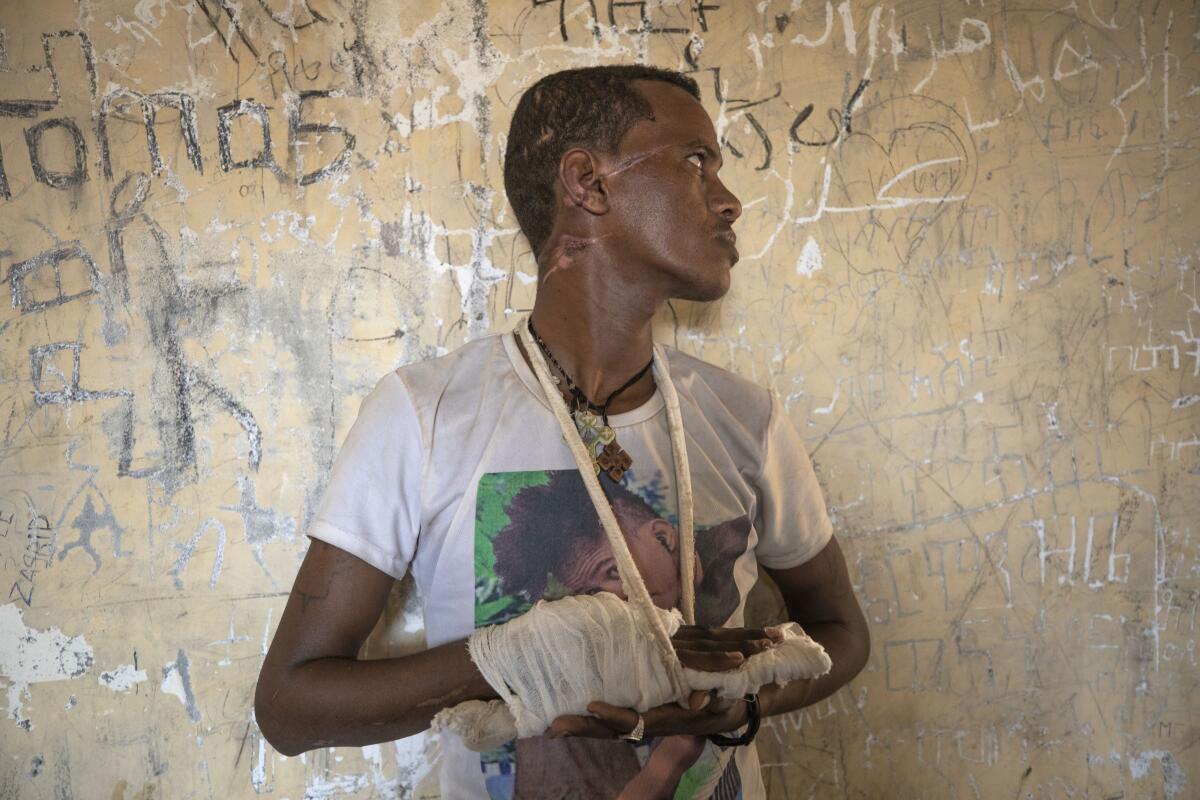
HAMDAYET, Sudan — One survivor arrived on broken legs, others on the run.
In this fragile refugee community on the edge of Ethiopia’s Tigray conflict, those who have fled nearly two months of deadly fighting continue to bring new accounts of horror.
At a simple clinic in Sudan, one doctor who is himself a refugee, Tewodros Tefera, examines the wounds of war. Children injured in explosions. Gashes from axes and knives. Broken ribs from beatings. Feet scraped raw from days of hiking to safety.
On a recent day, he treated the shattered legs of fellow refugee Guesh Tesla, a recent arrival.
The 54-year-old carpenter came bearing news of some 250 young men abducted to an unknown fate from a single village, Adi Aser, into neighboring Eritrea by Eritrean forces, whose involvement Ethiopia denies. Then in late November, Guesh said he saw dogs feeding on the bodies of civilians near his hometown of Rawyan, where he said Ethiopian soldiers beat him and took him to the border town of Humera.
There, he said, he was taken to a courthouse that he said had been turned into a “slaughterhouse” by militia from the neighboring Amhara region. He said he heard the screams of men being killed, and managed to escape by crawling away at night.
“I would never go back,” Guesh said.
The irony of Ethiopian Prime Minister Abiy Ahmed, a Nobel Peace Prize winner, engaging in war has not been lost on international observers.
Such accounts remain impossible to verify as Tigray remains almost completely sealed off from the world more than 50 days since fighting began between Ethiopian forces, backed by regional militias, and those of the Tigray region that had dominated the country’s government for nearly three decades.
Ethiopian Prime Minister Abiy Ahmed, last year’s Nobel Peace Prize winner for political reforms that also marginalized Tigray leaders, continues to reject international “interference” amid pleas to allow unimpeded humanitarian access and independent investigations. The conflict has shaken Africa’s second-most-populous country, with 110 million people, and threatens to fray Abiy’s peacemaking in the turbulent Horn of Africa.
“I know the conflict has caused unimaginable suffering,” Abiy wrote last week, but he argued that “the heavy cost we incurred as a nation was necessary” to hold the country together.
No one knows how many thousands of people have been killed in Tigray since the fighting began Nov. 4, but the United Nations has noted reports of artillery strikes on populated areas, civilians being targeted and widespread looting. What has happened “is as heartbreaking as it is appalling,” U.N. human rights chief Michelle Bachelet said last week.
Ethiopia says it is returning thousands of refugees who ran from camps in its Tigray region as war swept through.
Now refugees are arriving from areas deeper inside Tigray amid reports that fighting continues in some locations. These newer arrivals have more severe trauma, said Tewodros, the doctor, with signs of starvation, dehydration and sometimes gunshot wounds.
The abuses are often meted out along ethnic lines.
“Everyone looks at you and points out the part of you that doesn’t belong to them,” said Tewodros, who is of both Tigrayan and Amhara backgrounds. “So if I go to Tigray, they would pick up that I’m Amhara because Amhara is not a part of them. When I go to Amhara, they would pick up the part of Tigray because Tigray is not a part of them.”
Such differences have become deadly. Many ethnic Tigrayan refugees have accused ethnic Amhara fighters of targeting them, while survivors of one massacre last month in the town of Mai-Kadra say Tigrayan fighters targeted Amhara. Other attacks followed.
News Alerts
Get breaking news, investigations, analysis and more signature journalism from the Los Angeles Times in your inbox.
You may occasionally receive promotional content from the Los Angeles Times.
Abrahaley Minasbo, a 22-year-old dancer, said Amhara militia members dragged him from his home in Mai-Kadra on Nov. 9 and beat him in the street with a hammer, an ax, sticks and a machete, then left him for dead. Scars now slope across the right side of his face and neck. He was only treated six days later, by Tewodros in Sudan.
Another patient, 65-year-old farmer Gebremedhin Gebru, was shot while trying to run from Amhara militia members in his town of Ruwasa. He said he lay there for two days until a neighbor found him. People “will be hit if they are seen helping” the wounded, Gebremedhin said.
For Tewodros, the conflict has resulted in one civilian casualty after another since shelling began in early November as he worked at a hospital in Humera. Some shelling came from the north, he said, the direction of nearby Eritrea.
“We didn’t know where to hide,” he said. “We didn’t know what to do.”
Fifteen bodies arrived at the hospital that first day and eight the next, he said. Then, as shelling continued, he and colleagues fled, transporting wounded patients on a tractor to the nearby community of Adebay. They abandoned that town when fighting intensified.
The U.N. refugee chief says Ethiopia’s announcement that it has completed its military offensive in its defiant Tigray region ‘does not mean the conflict is finished.’
Tewodros and his colleagues hid for two days in the forest, hearing gunfire and shouting, before walking for more than 12 hours, hiding from military convoys and crossing a river into Sudan. There he accepted a volunteer position with the Sudanese Red Crescent Society treating fellow refugees.
“Where we are now is extremely unsafe,” he said of the reception center near the border, citing the Amhara fighters who approach the riverbank and threaten the refugees. The militias “are more dangerous than the Ethiopian national forces,” he said. “They are more insane and crazy.”
He doesn’t know what lies ahead for his wife and two small children in Ethiopia’s capital, Addis Ababa. He hasn’t seen them in 10 months, and the children always ask him when he can come home.
Ethiopia’s prime minister often speaks of “medemer,” or national unity, Tewodros said, in a country with more than 80 ethnic groups. “Medemer would have been me. Medemer would have been my kids,” Tewodros said. But he no longer knows if his children, also of mixed ethnicity, have any future in the country.
Guesh, a father of three, knows even less about what’s to come. He left his wife and three children behind a month ago in Adi Aser village, where a farmer was giving them shelter. Now, like many refugees torn from their families, he doesn’t know if they are alive or dead.
Every time he sees another new refugee arriving in Sudan, he holds out photos of his family, so emotional he can hardly speak. In this conflict that remains so much in the shadows, he now relies on strangers to tell him their fate.
More to Read
Sign up for Essential California
The most important California stories and recommendations in your inbox every morning.
You may occasionally receive promotional content from the Los Angeles Times.
